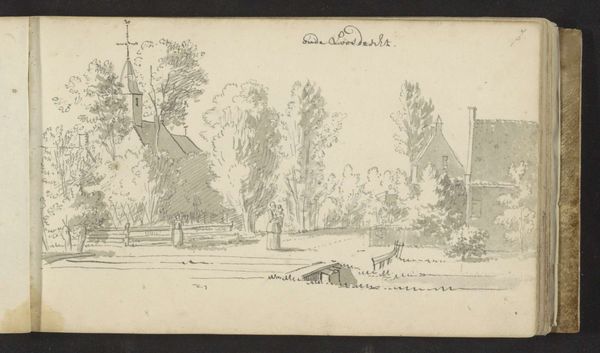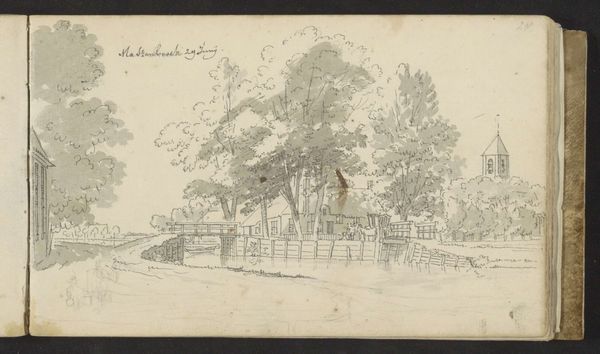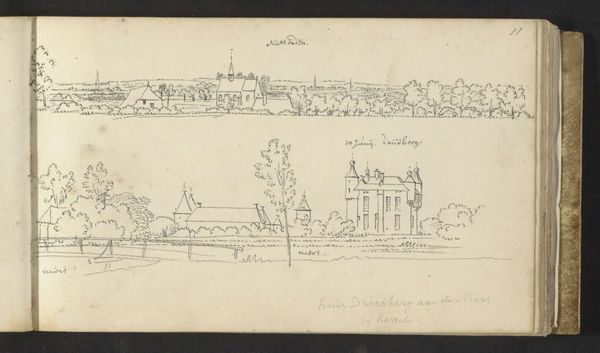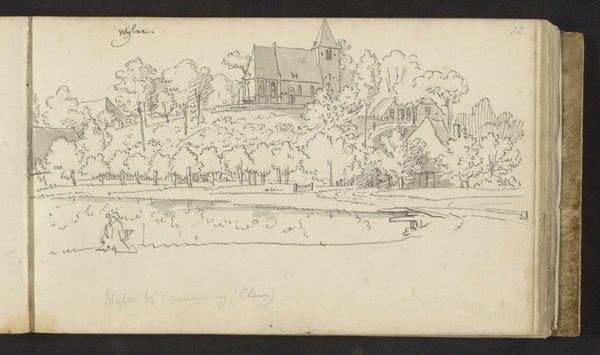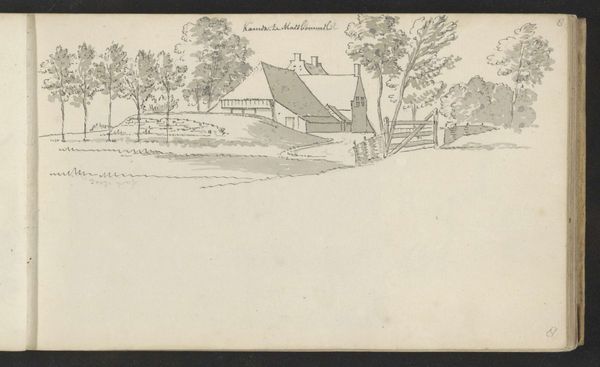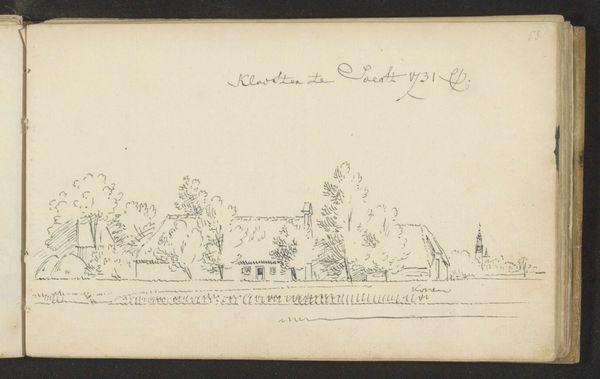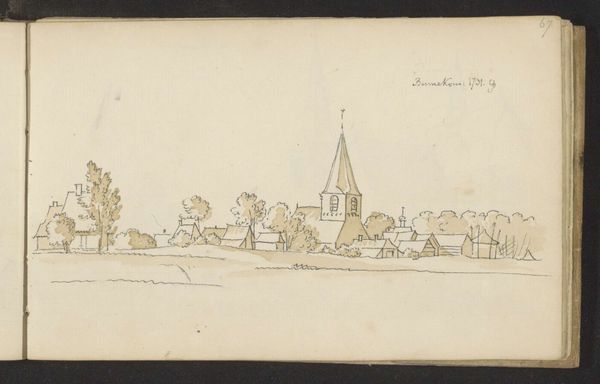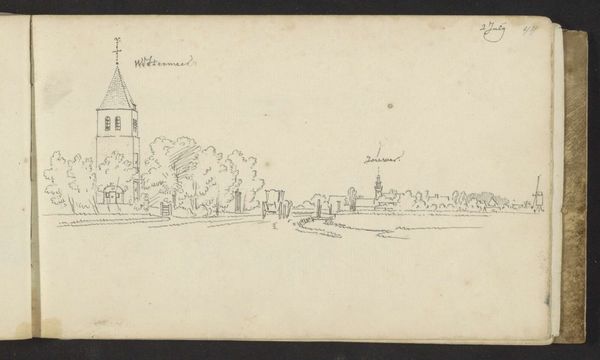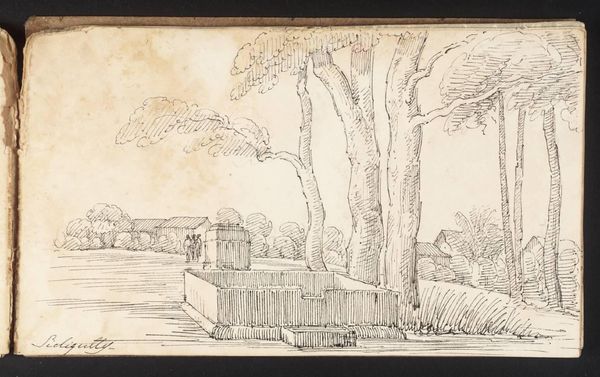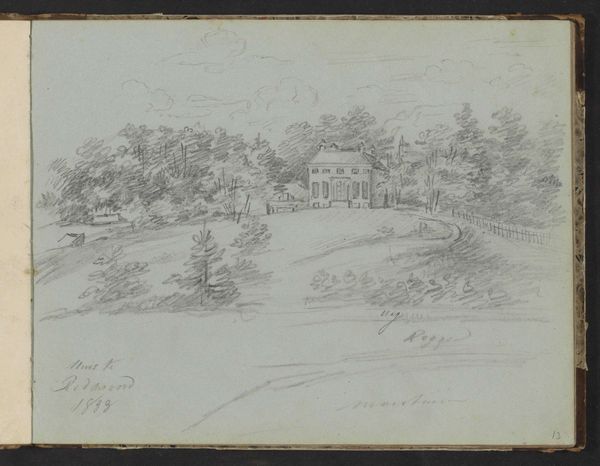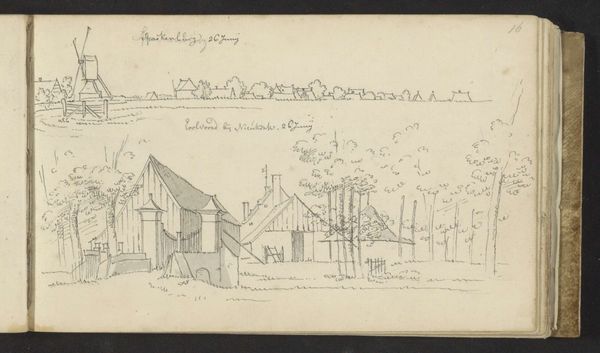
drawing, paper, ink
#
drawing
#
mechanical pen drawing
#
pen sketch
#
sketch book
#
landscape
#
paper
#
personal sketchbook
#
ink
#
sketchwork
#
pen-ink sketch
#
pen work
#
sketchbook drawing
#
cityscape
#
genre-painting
#
storyboard and sketchbook work
#
sketchbook art
Copyright: Rijks Museum: Open Domain
Editor: This drawing by Abraham de Haen, titled "Dorpsgezicht met brug te Voorhout" from 1731, made with ink on paper, strikes me as incredibly calm. The buildings, bridge, and even the trees seem sketched with such gentle precision. What do you see in this piece? Curator: The essence of this work lies in its structural articulation. Note how the artist utilizes the pen and ink medium to delineate spatial relationships. The composition is divided into distinct horizontal layers: the foreground water, the middle ground of buildings and trees, and the suggestion of sky in the background. This stratification creates depth and visual interest. Editor: The details, while subtle, definitely pull me in. Curator: Exactly. Consider also the economy of line. De Haen masterfully suggests form with minimal strokes. Each mark serves a purpose, defining edges, indicating texture, and conveying light and shadow. The linear quality is further accentuated by the monochromatic palette. Editor: So, you're focusing on the visual structure and how the artist uses line and space? Curator: Precisely. By attending to the formal elements – line, composition, and spatial organization – we gain a deeper appreciation for the artist's skill and the intrinsic beauty of the work itself. Editor: I see what you mean about the lines creating depth. I’m finding new appreciation for sketches, considering the way they demonstrate the technical skill of the artist. Curator: And that is how formal analysis enhances our understanding.
Comments
No comments
Be the first to comment and join the conversation on the ultimate creative platform.
